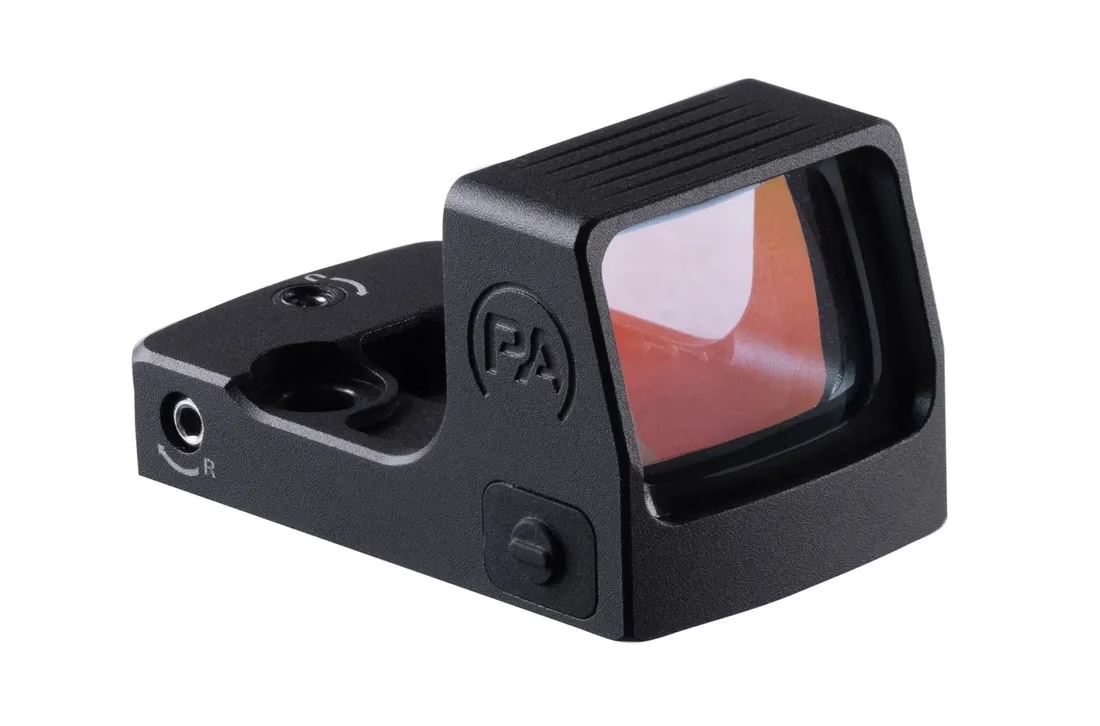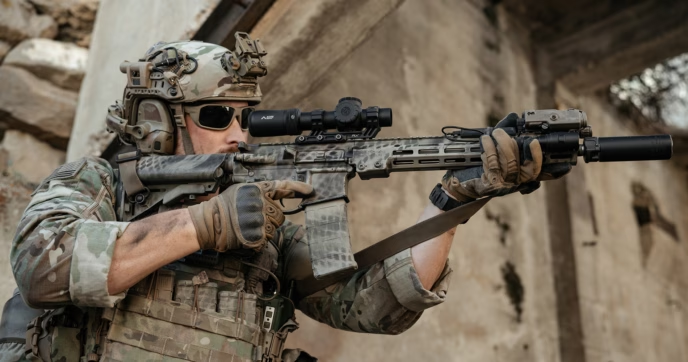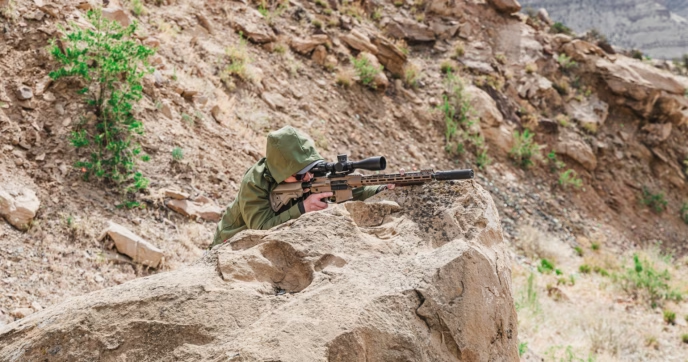When shopping for a pistol optic, one of the most crucial features is its reticle. The reticle serves as the primary point of aim, so your choice of reticle can have a significant impact on your pistol’s performance.
The most common reticle found on reflex sights is the standard dot reticle. They’re measured in minutes of angle (MOA), which is an angular measurement that refers to adjustments and reticle size. One MOA represents 1 inch at 100 yards—meaning if your optic had a 2-MOA dot, your reticle would appear to cover 2 inches of it at 100 yards, 4 inches at 200 yards, and so on.
Smaller dots offer greater precision at distance, and larger dot reticles are easier to pick up under stress. As such, 3- and 6-MOA dot reticles have become some of the most popular pistol reticle options.
Still, despite being used so extensively, choosing one over the other can be a difficult choice, especially if you’re new to running optics on pistols. Follow along as we look at the distinct characteristics and performance of each one.
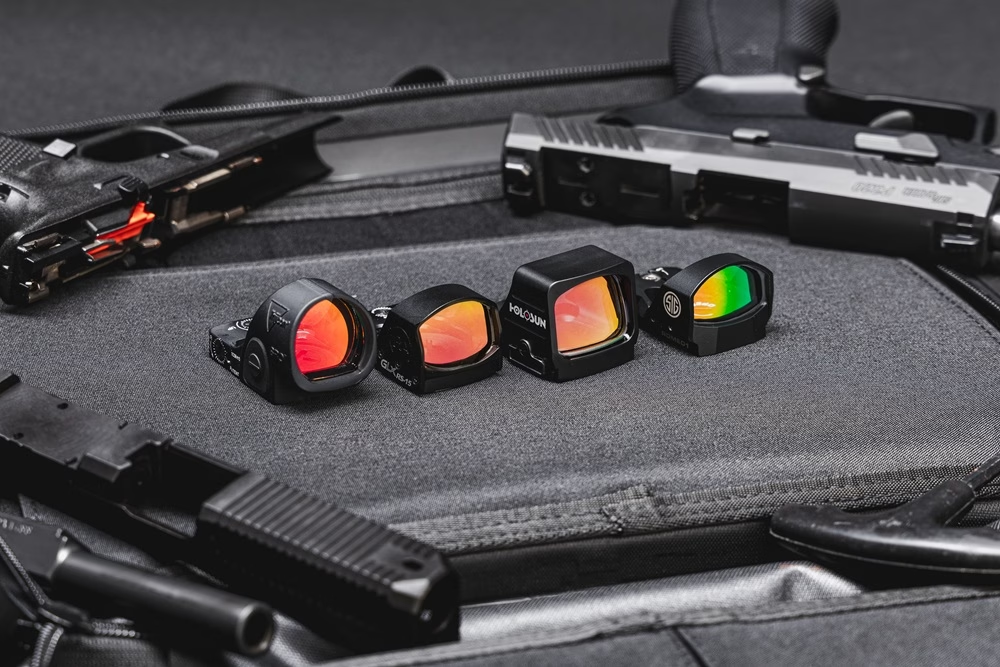
Understanding Pistol Reflex Sights
Before starting your search, it’s critical to understand how red dot sights work. For pistols, there’s really only two options to choose from: open-emitter mini-reflex sights and closed-emitter pistol red dot sights. Both work by collimating light projected by an emitter diode onto the objective lens to form a reticle image, but they each offer their own unique advantages.
As their name suggests, open-emitter mini-reflex sights use an open-emitter design and only have one lens. Because of their open design, they generally offer a wide field of view, while their minimalistic construction makes them exceptionally lightweight. However, having such a design exposes the emitter diode, making them susceptible to occlusion from dirt, dust, or any other environmental debris.
Closed-emitter pistol red dots have a fully enclosed design and two lenses, just like full-size red dot sights. Their emitter diodes are sealed and protected from any debris, and their robust construction gives them remarkable resilience in intensive competitive and professional applications. Still, their FOV is constricted by the optic body and their added bulk increases their weight and overall footprint, which can make concealment an issue if you don’t properly dress around it.
Between the two, both are extraordinarily versatile across multiple applications, but it’s paramount that you understand the advantages and drawbacks of each one. Fortunately, we cover this at length in our guide, “Reflex Sights vs. Red Dot Sights”. We recommend checking it out for a deeper dive on both optic variants.
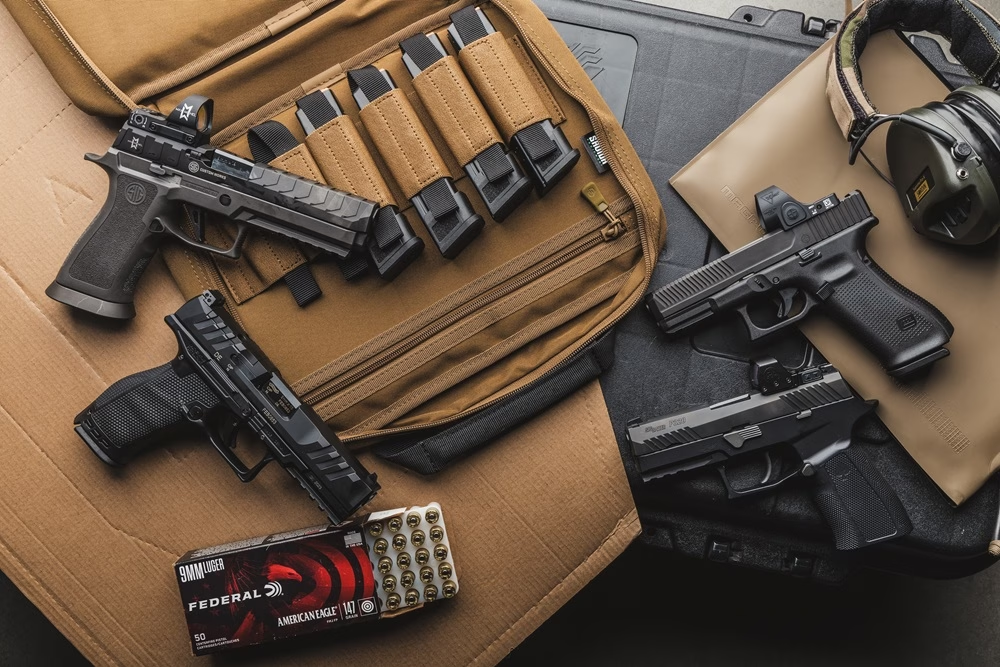
3-MOA vs. 6-MOA Reflex Sights
3-MOA Dot Pros and Cons
3-MOA red dot sights provide a rather good balance of precision and speed. At 100 yards, a 3-MOA dot is going to cover three inches of the target, meaning at a more reasonable pistol shooting distance of 25 yards, it’s going to cover roughly ¾ of an inch of your target, providing an extra modicum of precision for distant shots.
However, this comes at the cost of target acquisition speed. While great for more precise shots, the smaller dot size requires more focus to acquire, which can be difficult in stressful/dynamic scenarios. Granted, with practice, you can get to a point where finding the dot is quick and easy, but for the uninitiated or for those who prioritize acquisition speed, this reticle requires a bit of extra practice to get used to.
Additionally, 3-MOA dots can cause issues for those with astigmatism. Astigmatism can cause your reticle to distort, causing either a starburst, smear, or blown out appearance, resulting in a less precise point of aim. While the effects of astigmatism are going to be present across all reticle sizes if you have the condition, they are particularly noticeable on smaller reticles. Remember, it’s still possible to use a 3-MOA dot if you have astigmatism, but it can be difficult to do so.
6-MOA Dot Pros and Cons
6-MOA red dot sights are designed to provide quick target acquisition speed at close range. These reticles cover six inches of your target at 100 yards, or 1½ inches at 25 yards. Being larger, they’re much easier to pick up under stress, making them particularly well suited for defensive pistol shooting, and other applications that emphasize close-range performance. Also, because of their size, they’re less prone to astigmatic distortion. Although they aren’t completely immune from distortion if you have astigmatism, the larger dot size makes the effects it causes much less severe.
Still, while 6-MOA dots excel in close-range applications, they don’t offer nearly the same level of precision as 3-MOA options. As such, when shooting at targets beyond 20 or so yards, your dot is going to cover a much larger area, obscuring more of the target, and making precise shots less likely. As such, they aren’t as versatile as 3-MOA dots in this regard.
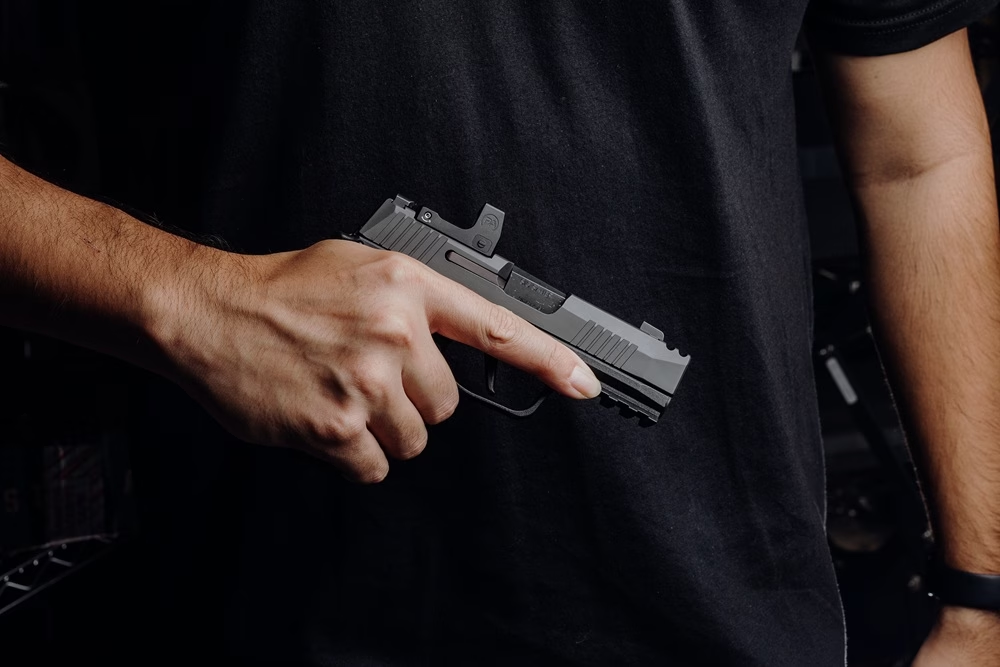
Which Reticle Size is Best?
Ultimately, choosing one reticle over the other comes down to figuring out which one best aligns with your needs and preferences. In most cases, the difference isn’t honestly that huge. In theory, 3-MOA dots offer the most versatility, providing good close-range performance and precision for shots at distances beyond 25 yards. 6-MOA reticles, on the other hand, prioritize target acquisition speed, making them ideal for close-range shooting.
While both can be a solid option, there’s always nuances to consider. For instance, if you’re planning to get an optic to use in competitive shooting disciplines that have targets at varying distances, near and far, a 3-MOA optic is your best bet. If you’re wanting something that’s well-suited for close range engagements, such as what’s common in defensive applications, a 6-MOA dot is also a great pick.
Popular 3- and 6-MOA Pistol Optics
Now that you have an idea of how 3- and 6-MOA reticles perform, you need to find an optic. However, while this seems like an easy task, shopping for one can be a bit overwhelming simply because of the sheer variety available. Our guide, “The 5 Things to Know Before Buying a Red Dot”, is a useful resource that can help you out in your search. For now, below are some popular makes and models to consider:
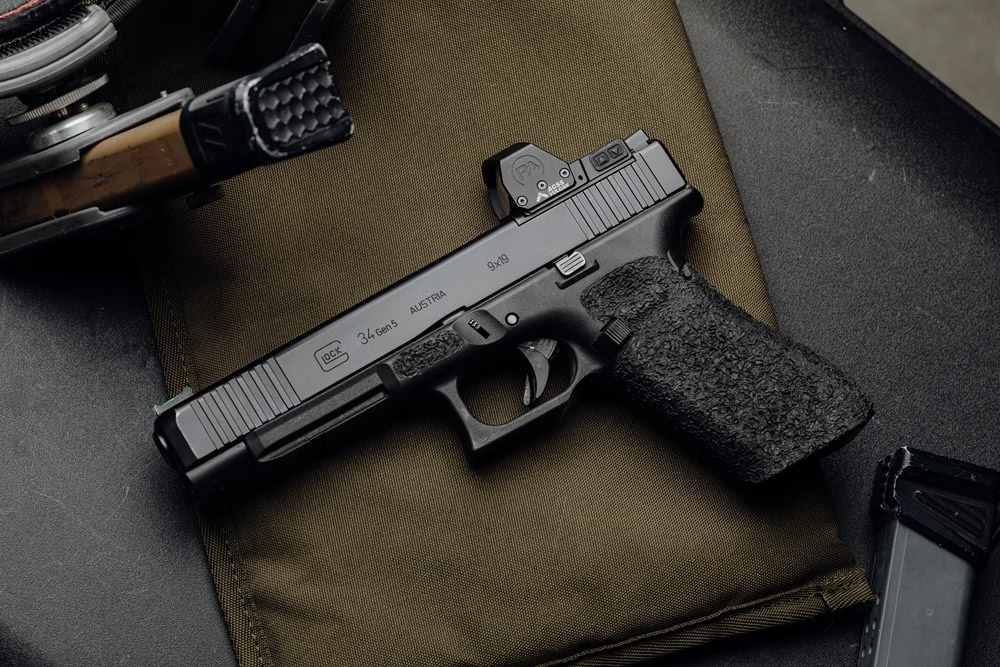
Primary Arms Optics GLx® RS-15
The Primary Arms Optics GLx® RS-15 is an exceptionally popular mini-reflex sight that blends durability, versatility, and affordability. Their lightweight 7075-T6 aluminum body can withstand harsh use in adverse conditions, and they come standard with AutoLive® motion activation as well as an automatic shut-off feature to maximize the optic’s battery life, giving it an estimated run time of 50,000 hours.
Currently, the RS-15 isn’t available in 6-MOA configuration. Instead, they’re available with either a 3-MOA dot reticle, or the ACSS® Vulcan® reticle system. Regardless, the 3-MOA variant can still be a solid choice for all applications, as it only weighs 1.11 ounces, and is both water and shockproof.
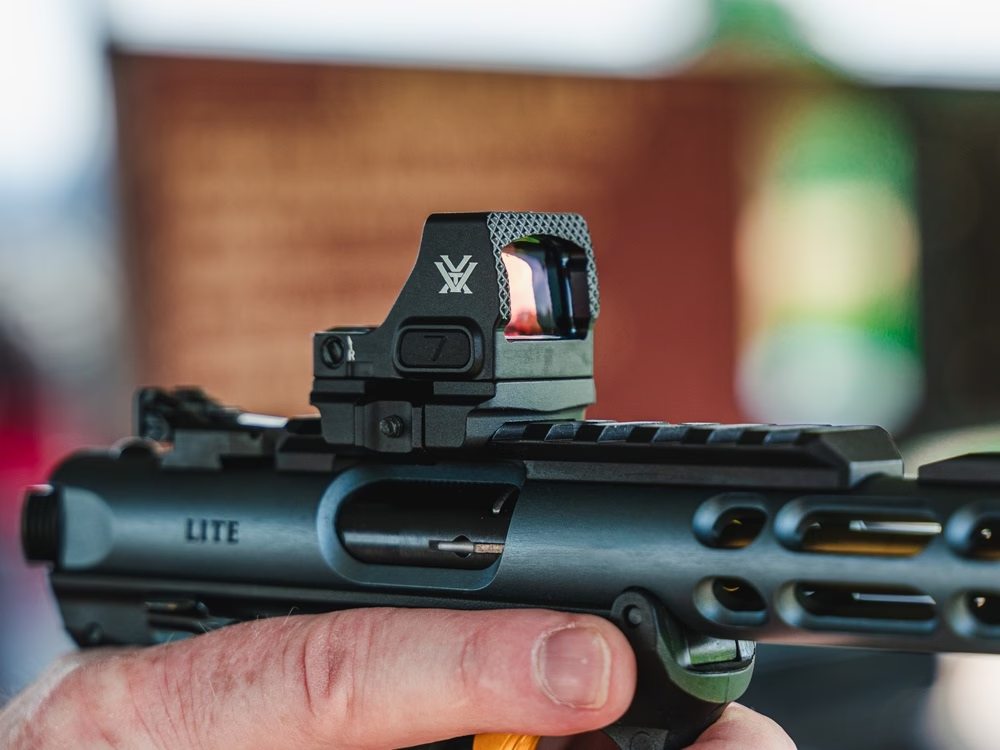
Vortex Defender
Known mainly for their variable power optics, Vortex Optics also produces many reflex sights, with the Defender series being their flagship pistol optic offering. Utilizing a 7075-T6 aluminum construction, they’re resilient to wear and tear, come packed with features, and they’re available with multiple reticles, including both 3- and 6-MOA dot reticles. Notably, they come standard with built-in motion activation and an automatic shut off, plus, each Defender optic comes with Vortex’s Fast-Rack textured front face, allowing you to use the optic itself when racking your pistol.
There are three main variants of the Defender: the Vortex Defender CCW, Defender ST, and the Defender XL. The Defender CCW is the smallest option, designed specifically for sub- and micro-compact pistols. The Defender ST is ideal for compact and full-size pistols, and lastly, the XL is fit for the same size pistols, but is larger in size, providing a bigger optic lens for a wider FOV. All three are available with either a 3- or 6-MOA dot reticle.
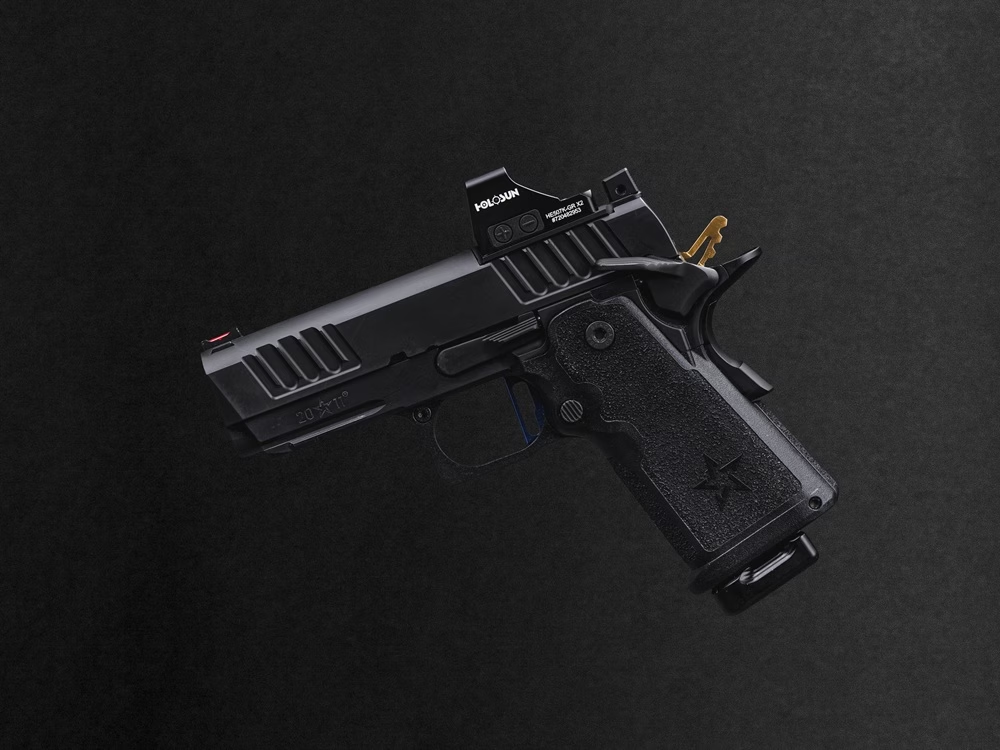
Holosun
Holosun is another well-known name in the optic industry, renowned for their wide range of mini-reflex and pistol red dot sight offerings. For those interested in running a 6-MOA dot reticle, the Holosun HS407K mini-reflex sight is a solid pick that’s been outfitted with a plethora of Holosun’s top features. Most notably, the HS407K comes standard with Holosun’s ShakeAwake™ motion activation and automatic shut-off, and it also comes with their Super LED, giving it upwards of 50,000 hours of continuous battery life.
Like the other optics mentioned thus far, the HS407K also uses an aluminum construction that’s both lightweight and durable. As of right now Holosun doesn’t offer any dedicated 3-MOA optics, but their HE507K is available with an ACSS Vulcan Dot reticle system. While not a standalone dot reticle, this version of the ACSS Vulcan reticle system does have a 3-MOA center dot. Moreover, this optic shares many features in common with the HS407K, but it has a slightly shorter battery lifespan of 40,000 hours.
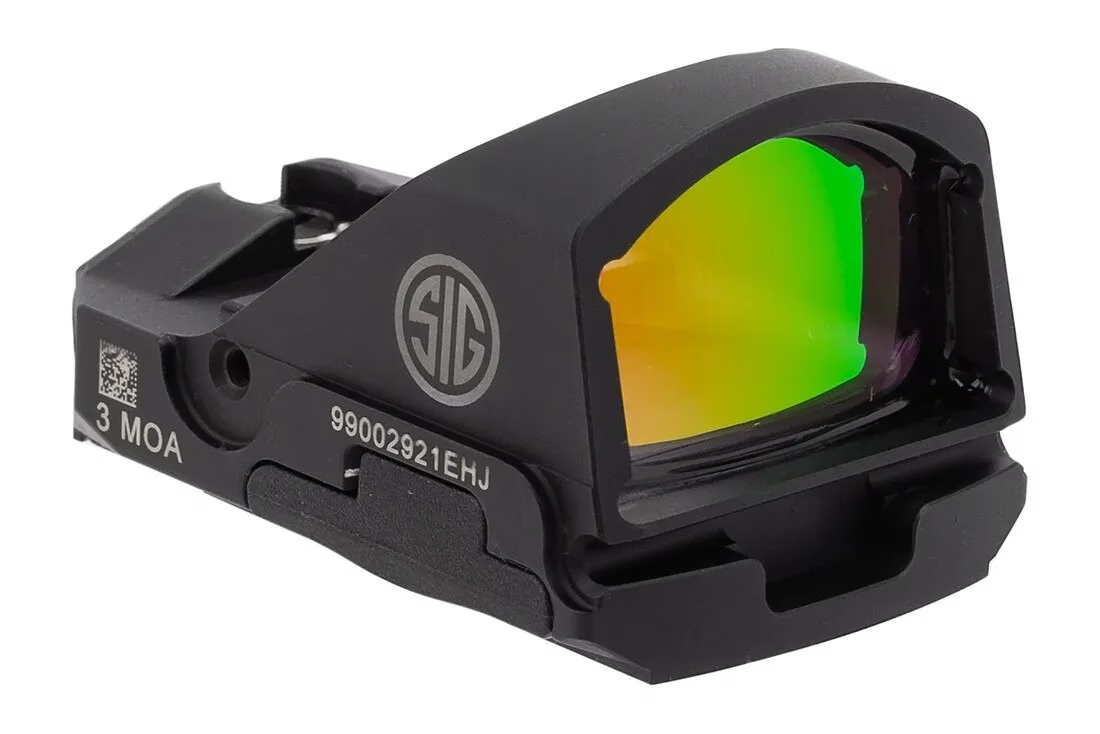
SIG Sauer
SIG Sauer is an avid producer of top-tier rifles and pistols, but they also produce optics as well, with one of their most popular pistol optics being the SIG Sauer ROMEO2 reflex sight. ROMEO2 optics are offered in both a 3- and 6-MOA configuration, have a 25,000-hour battery life, and are constructed from 7075 aluminum. They also come with SIG’s MOTAC motion activation and automatic shut-off and they also come with SIG’s unique MAGNETAC feature, which automatically powers down the optic when holstered (only works with MAGNETAC compatible holsters).
Another neat feature of these optics is their mounting footprint. These optics use the same mounting footprint as the ROMEO1PRO, making it compatible with all SIG pistols that come with a pro cut slide. For other handgun models, adapters are available that allow you to use the ROMEO2 on multiple pistols with no issue.
Conclusion
It’s easy to see why 3- and 6-MOA dot reticles are so widely favored. Both options have their own unique set of advantages that make them well-suited for different scenarios, so it’s important to consider each option’s performance when choosing one over the other.
3-MOA reticles are a smaller, versatile option that’s offers an extra degree of precision when shooting at further distances. While effective in close range, their smaller size requires some getting used to as far as sight acquisition goes. Regardless, they can be a great option for everything from competitive shooting to simpler recreation.
6-MOA reticles provide the most in terms of sight acquisition speed. The larger reticle image is easy to see, especially in dynamic scenarios or when under stress. As such, they’re favored heavily for their close-range performance with them typically being used for concealed carry and personal/home defense.
So, while it’s impossible to declare either as the supreme reticle choice, one can still be better than the other depending on how your needs and preferences dictate. Once you’ve narrowed down the reticle that’s right for you, all you need to do next is choose your optic, and afterwards, you can rest assured knowing you have the one that’s best fit for your needs.
